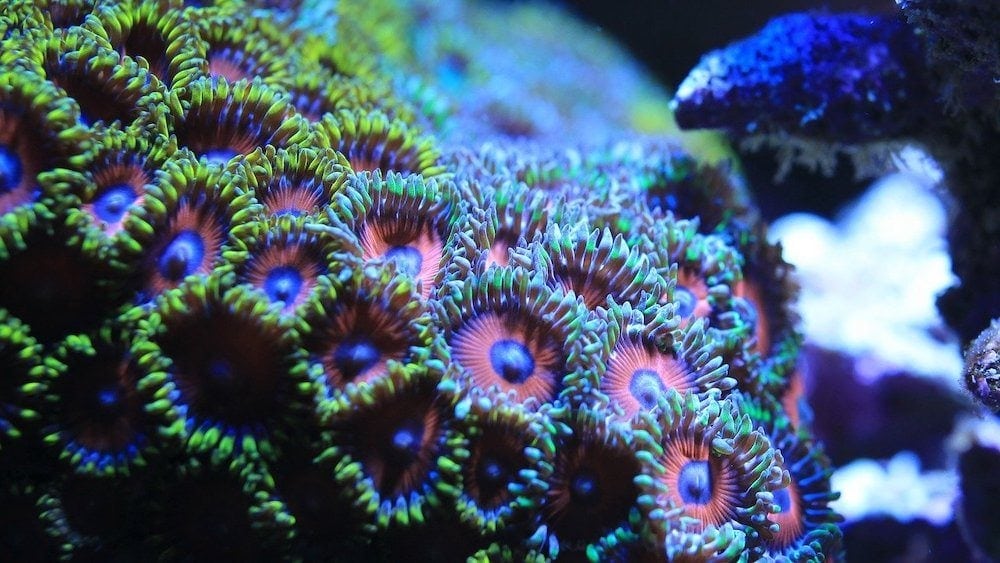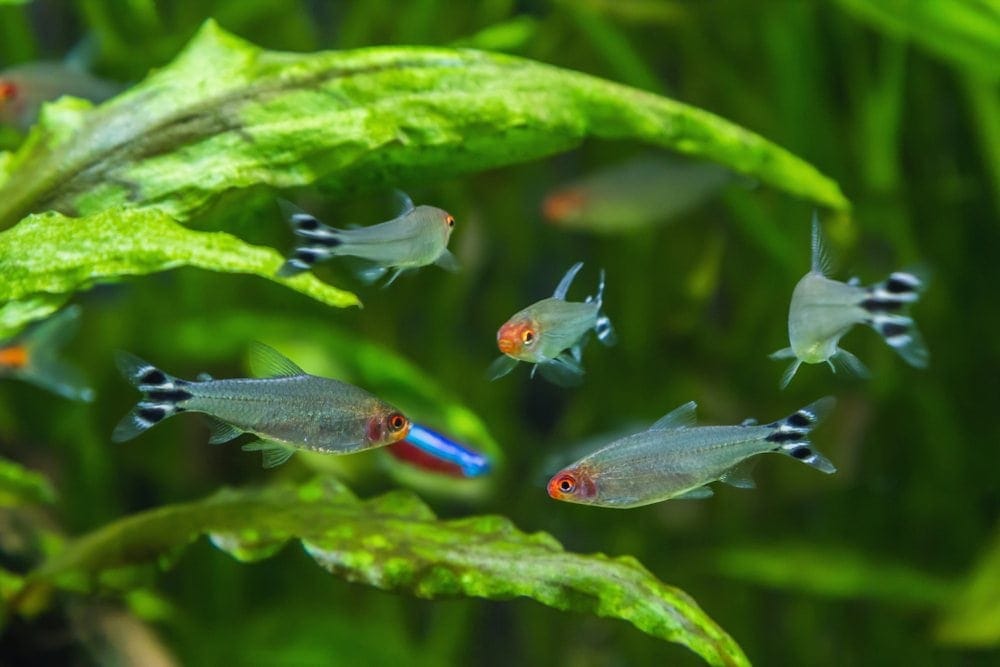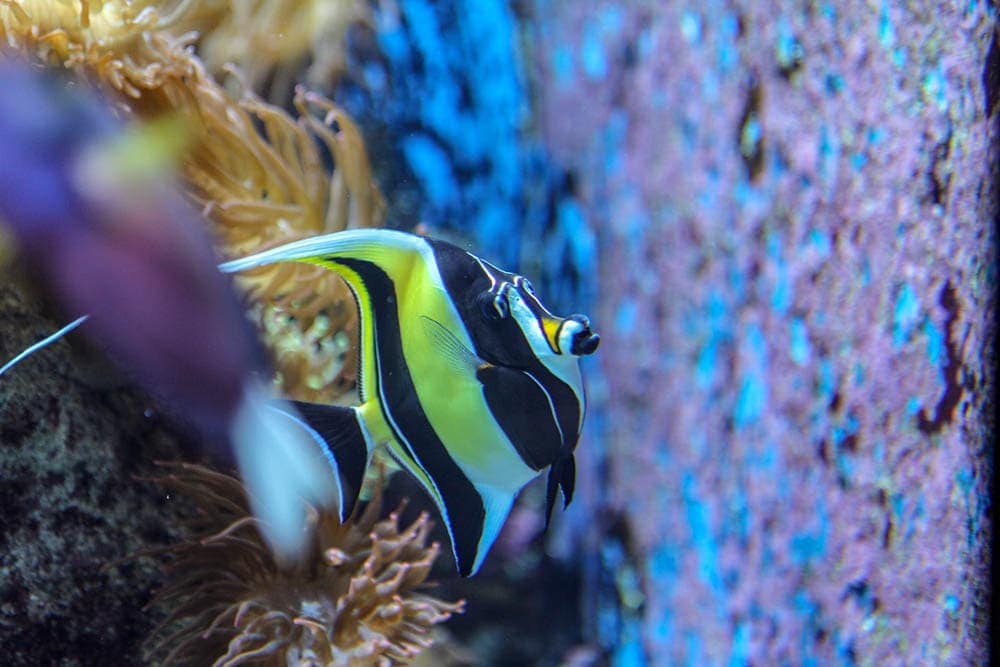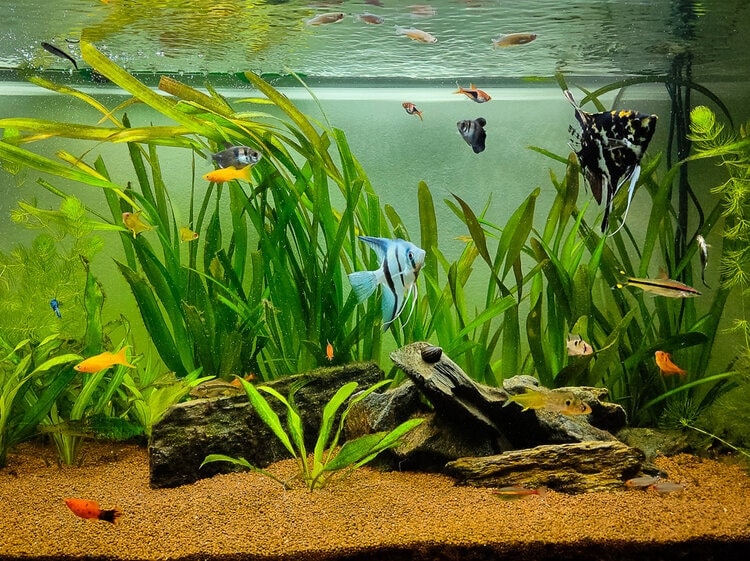7 Best Bio Filter Medias For Reef Tank Setups in 2024: Reviews & Top Picks

Updated on

Biological filtration is a very important part of any aquarium. Fish produce a lot of waste, which releases ammonia and nitrates into the water, as does a host of other decaying materials. The point is that ammonia and nitrates are very bad for fish, which means that they need to be filtered out and broken down. This is done through biological filtration, but this means that you need the right media.
There are lots of different kinds of bio media out there, but not all are the same, not by a long shot. For instance, some types of bio media are best used for freshwater tanks, whereas others are best used for saltwater tanks.
The biological filtration requirements for saltwater tanks are a bit different from freshwater, so this is important to keep in mind. At any rate, today we are here to help you find the best bio media for saltwater (this is our top pick), so let’s get right to it!
 A Quick Comparison of Our Favorites in 2024
A Quick Comparison of Our Favorites in 2024
| Rating | Image | Product | Details | |
|---|---|---|---|---|
| Best Overall |

|
Fluval Biomax |
|
Check Price |

|
CerMedia MarinePure Bio-Filter |
|
Check Price | |

|
Aquatic Arts FilterPlus |
|
Check Price | |

|
EHEIM Substrat Pro |
|
Check Price | |

|
Govine Bio Balls |
|
Check Price |
The 7 Best Bio Filter Medias For Reef Tanks
When it comes to the best option for saltwater, we think that the following choice is one of the best. It might be really simple and straightforward, but it gets the job done without question.
1. Fluval Biomax Filter Media
These little bio ceramic rings work great for saltwater aquariums and freshwater aquariums alike (you can buy them here). There is really not all that much to say about them, but they definitely get the job done.
For one, they are made out of inert ceramic, so they do not affect the water quality in any way at all, which is quite beneficial no doubt. Moreover, they contain large channels with lots of porous spaces and littler tunnels. This has two main benefits.
Fluval Biomax Filter Media allows for a lot of water to media contact and for a lot of water to pass through them. Therefore, filter flow rates will not be negatively affected, plus the water gets filtered adequately due to a high bacteria to water contact ratio.
At the same time, the porous spaces in this Media allows a whole lot of beneficial bacteria to grow in order to control ammonia and nitrate levels.
- Don’t use up much space
- Do not affect water parameters
- Lots of water to media contact
- Does not affect filter flow rates
- Lots of porous spaces for bacteria to grow
- The rings tend to deteriorate fast, sometimes growing mold
2. CerMedia MarinePure Bio-Filter Media
Another simple yet effective option to go with, this particular filter media is made in the shape of balls instead of rings. Now, they do not have quite as much surface area for the water to touch and pass through as the rings we talked about above, but they still work just fine.
These balls are also made out of inert ceramic, so you don’t have to worry about them negatively affecting the pH or anything else like that. You can use these things for larger bio media filters, plus they work well for some pretty large tanks too.
This CerMedia MarinePure Media is made very porous so that a whole lot of bacteria can grow on it. This is great because it means that this media kills a whole lot of ammonia and nitrates in your saltwater aquarium.
With all of that being said, these things are actually made so porous that water can more or less pass right through them. This helps increase the rate of biological filtration, plus it also helps to keep the filter flow rate as high as possible.
- Lots of surface area for bacteria
- Very porous for good water flow
- Lots of media to water contact
- Great for larger filters and tanks
- Ceramic media does not affect pH
- Known to get clogged on occasion
3. Aquatic Arts FilterPlus Bio-Media
This is another fairly cool and unique option to go with in terms of bio media for saltwater tanks. First and foremost, this is not made out of ceramic like many other types of media. This particular media is actually made out of minerals and rocks mined right out of the ground in the USA.
Aquatic Arts FilterPlus Bio-Media is an all-natural type of media that comes right from the earth. This stuff never degrades and it never needs to be replaced, plus there are no chemicals used either.
These rocks, for a lack of better words, are quite porous and they do provide you with a lot of space to grow beneficial bacteria. The large surface area here is awesome for getting rid of ammonia and nitrates by allowing for massive bacterial growth.
One thing that does need to be said here is that these things are not quite as porous as some of the other options. What we mean to say here is that water to media contact, and water flow, are both a little limited.
- Totally natural material
- No chemicals needed
- Never needs replacement
- Does not alter water chemistry
- Great media to water contact
- Lots of surface area to grow bacteria
- Does slow down flow rate a little bit
- A little less water to media contact than with rings or balls
4. EHEIM Substrat Pro
Many people seem to like EHEIM Substrat Pro as a prime choice for saltwater bio media for a couple of different reasons. First off, this stuff is made out of a special kind of glass that has been treated just for this purpose.
The glass is very tough, it won’t degrade, and it should not get all moldy either. You can actually wash this stuff under your tap in order to reuse it. EHEIM Substrat Pro only needs to be replaced about once every 6 months, which is quite impressive to say the least.
EHEIM Substrat Pro has a whole lot of porous surface area and little tunnels to help with water flow. The high amount of porous surfaces on these little glass pebbles allows for a large growth of beneficial bacteria for taking care of ammonia and nitrates.
This also means that there is a lot of water to media contact, plus the water flow does not get affected either. People also seem to like this media because it does not take up a whole lot of space. This stuff will not affect water parameters or water chemistry either, which is a pretty big bonus too.
- Can be washed for easy maintenance
- Does not need to be replaced very often
- Does not get moldy
- Does not take up much space
- Lots of media to water contact
- Really porous for bacteria growth
- Does not alter water chemistry
- Have a tendency to crack and break
- Durability is questionable with high water flow rates
5. Govine Bio Balls
This particular type of filter media can be used for freshwater and saltwater tanks, as well as for ponds too. What is cool here is that you actually get both bio balls and ceramic rings at the same time.
We personally like both the balls and the rings as they each have their own certain benefits, so here you really get the best of both worlds. On a side note, both the balls and rings are made out of ceramics and other materials that will not alter the water chemistry, which is very beneficial.
The bio balls are made to have a very large surface area for maximum bacterial growth, but they also do not do bad in terms of water flow rates and water to media contact. The rings are also made to be extremely porous, which is great in terms of large bacterial growths, water flow, and media to water contact.
Govine Bio Balls and rings come in all shapes and sizes, which is actually a part of what makes them so effective at their job.
- Do not affect water chemistry
- You get both balls and rings
- Does not affect flow rates
- Lots of media to water contact
- Very porous for lots of bacterial growth
- There is not very much of it included in a package
- Many of the rings and balls break easily
6. Fluval G-Nodes Biological Filtration Media
This particular bio media is a good option because for one, it can be used for both saltwater and freshwater tanks, which is pretty cool. Moreover, Fluval G-Nodes Biological Filtration Media is designed in the shape of a star.
This is beneficial because it means that you can pack a lot more of these things into a bio media filtration chamber than other media with different shapes, such as balls and rings.
Fluval G-Nodes Media is made out of ceramic, so it won’t negatively affect water chemistry, which is always a bonus. Moreover, this stuff is made extremely porous, which is of course beneficial because it means that there is a whole lot of surface area for beneficial bacteria to grow and thrive.
These things are also specially designed so that water can easily flow through them, thus keeping water flow rates high while also providing quite a bit of media to water contact.
- Lots of media to water contact
- Good for flow rates
- Does not alter water chemistry
- Very porous for large quantities of bacteria
- Specific shape makes them compact
- Tend to degrade fairly fast
- May get clogged on occasion
7. Seachem Matrix Bio Media
Seachem Matrix Bio Media is also made out of inert materials to help ensure that it does not negatively affect water chemistry in any way. Moreover, the cool part here is that you can simply rinse off once it gets dirty, but it never actually needs to be replaced, not ever, which is pretty cool indeed.
Seachem Matrix Media is designed with maximum surface area compared to its overall weight and size. This means that you can fit a whole lot into a filtration chamber, plus there is plenty of surface area for bacteria to grow. At the same time, this also means that the water flow rates won’t be affected too much, plus there is ample media to water contact for ultimate purification.
- Does not affect water chemistry
- Never needs to be replaced
- Lots of surface area for bacterial growth
- Does not affect water flow rates too much
- Lots of water to media contact
- Some rocks are way more porous than others
- They do increase water hardness just a little bit
Buyer’s Guide: How to Pick the Best Bio Filter Medias For Reef Tank Setups
Bio media balls are a specific type and shape of bio media that you can go with. It is perhaps the most popular type. However, before you go out and make a final purchase, let’s take a quick look at the pros and cons of using bio media balls.
- Lots of surface area for bacterial growth
- Tend to have good water flow rates
- Tend to allow for maximum media-to-water contact
- Are not usually very expensive
- Are quite durable and long-lasting
- Are usually inert and will not affect water chemistry
- They take up a lot of space when compared to other media shapes
- They tend to get clogged and dirty quite a bit
- Bio balls tend to work best in the dry section of a filter when compared to the wet section

How To Choose The Right Biological Filter Media
There are just a few things that you need to beware of before you go out and buy the first best biological filter media that you see. Let’s go over some of the main considerations to keep in mind right now.
Porosity
For one, you need to look at how porous the specific media in question is. Generally speaking, the more porous the material is, the more surface area there is for bacteria to grow.
The more bacteria grows on the media, the better the filtration ends up being. Moreover, the more porous the material is, the less the water flow will be affected by the media. This also helps to increase media-to-water contact for optimal filtration.

Size & Shape
You also want to pay attention to the size and shape of the media in question. This is especially true if you have a small aquarium, a small filter, and limited space for media. You want to find something that has a shape which fits well with the other pieces of media.
The closer the pieces of media can fit together, the less space they require, thus increasing filtration efficiency. However, do keep in mind that having media that is too compact will most likely slow down the water flow rate a little bit.
The Material
There are lots of different materials that can be used for biological filtration. Good media types to go with include ceramic, plastic, glass, and natural rocks. Now, some of these are better than others, but they do have one thing in common.
None of them will negatively affect water chemistry as they are all inert and will not change pH or anything like that.
Filter Type
We are not going to get into all of the filter types right now, but the thing to keep in mind here is that not all media is designed to be used in every single filter. You need to do some research on the filter you have to see what kind of media is ideal for it.
At the same time, look to see if the type of media you are getting is ideal for the type of filter you have. Doing some research here is quite important indeed. On a side note, you might also want to look at the price, as some types of bio media are more expensive than others.

Conclusion
If you need the best bio media for saltwater filtration, we personally feel the above are some of the better options at the moment. It is up to you to find out exactly what kind of media you need and the required level of biological filtration for your aquarium. Once you know those things, your purchasing decision should be quite simple and straightforward.
Feature Image Credit: Pixabay
 A Quick Comparison of Our Favorites in 2024
A Quick Comparison of Our Favorites in 2024



















